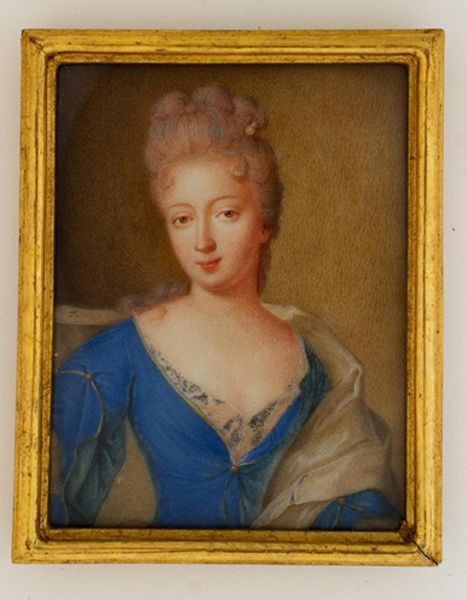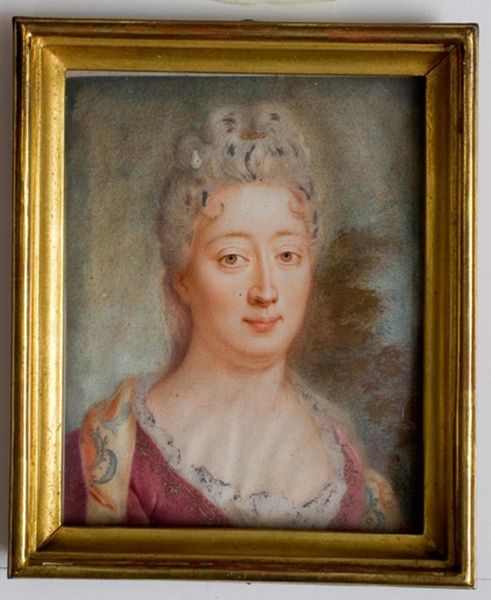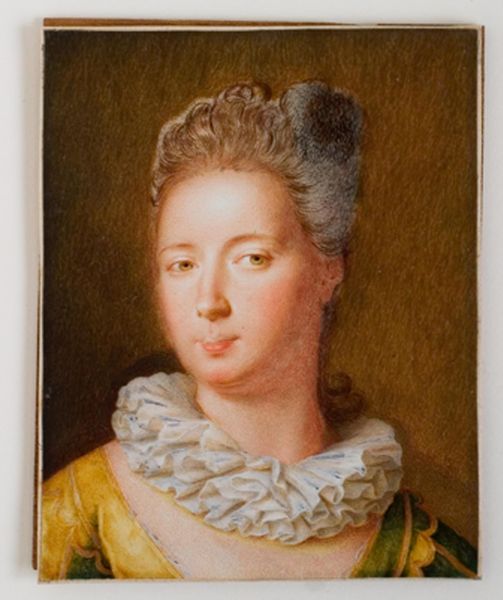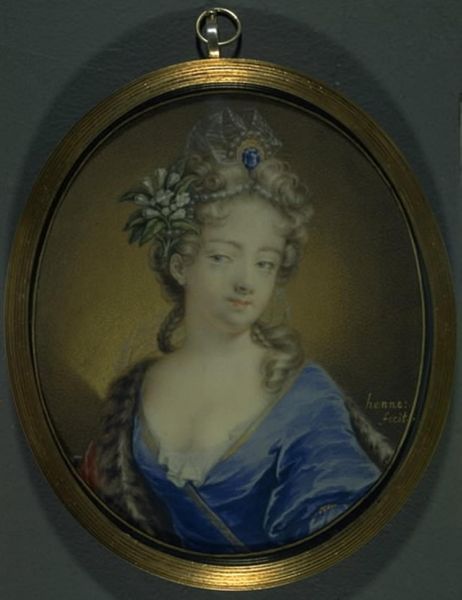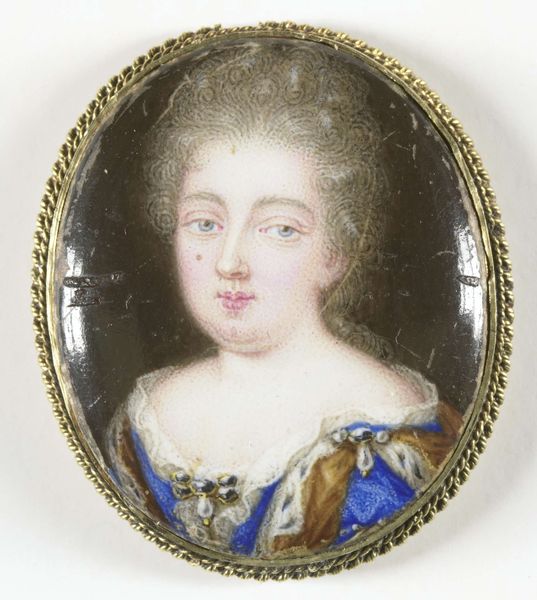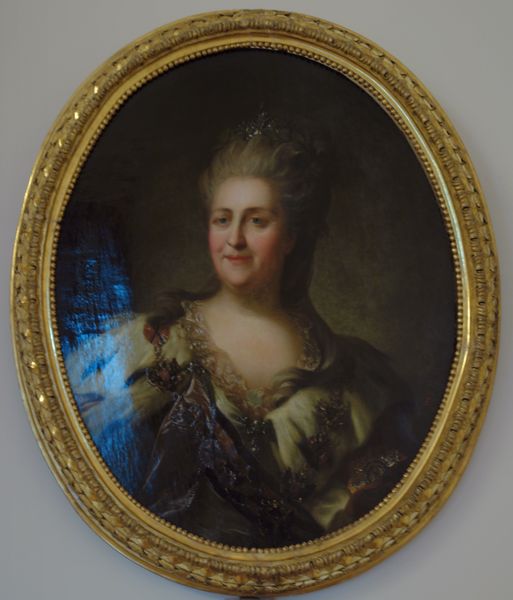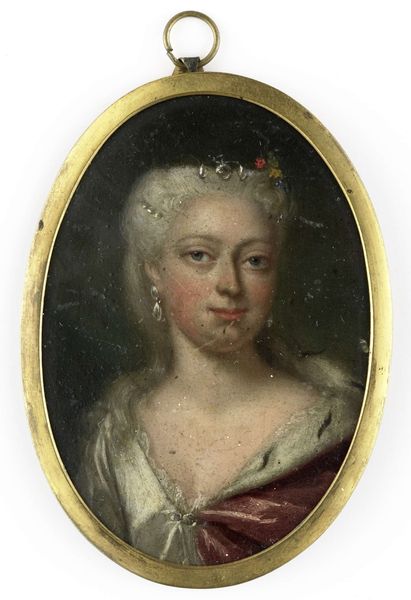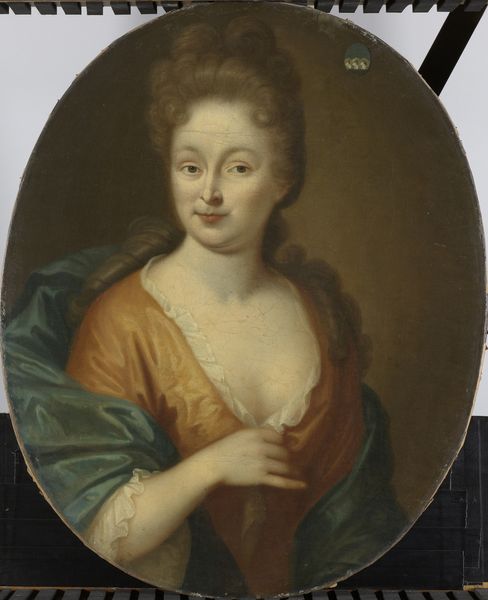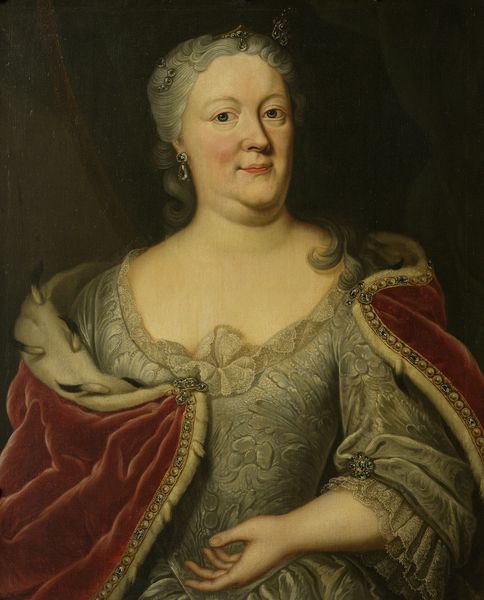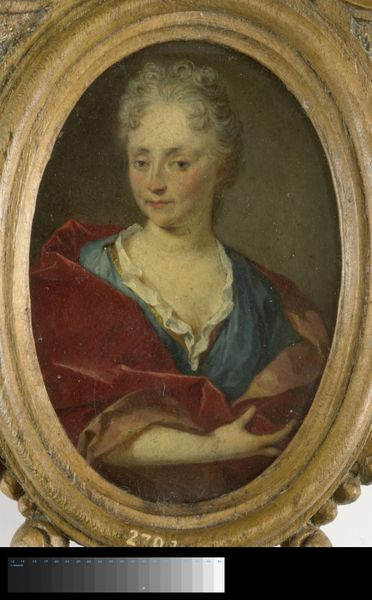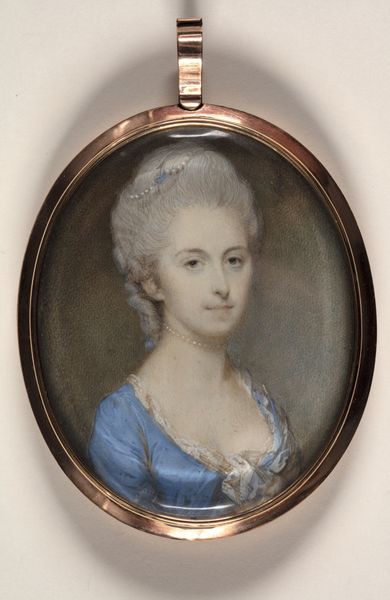
watercolor
#
portrait
#
watercolor
#
portrait art
#
watercolor
#
rococo
Dimensions: 11.5 cm (height) x 9.5 cm (width) (Netto)
Curator: Up next we have a piece titled "Dameportræt", or "Lady Portrait" in English. It's a watercolor by David Gardelle, thought to be made sometime between 1726 and 1748. You can currently find it here at the SMK, Statens Museum for Kunst. Editor: The first thing that strikes me is how intimate the portrait feels, despite what I imagine were its formal origins. The gentle blending of the watercolors gives the lady a soft, almost ethereal presence. There's a distinct vulnerability that pulls me in. Curator: Absolutely, that delicate execution really does suggest a departure from the strictly formal court portraiture we often associate with the Rococo period. Although Gardelle was Swiss, he primarily worked in Denmark, a smaller court compared to Versailles for instance, which certainly would have informed his portrait style and subject choices. Editor: You can feel that informality. And there is symbolism to decode as well: The loose drapery, the hairstyle...there's an air of deliberate simplicity in her appearance, as opposed to overwhelming aristocratic finery. Could this suggest an appeal to emerging Enlightenment values perhaps, a move away from pure ostentation? Curator: That's certainly one way to interpret it. You see a shift here in how wealth and status are presented visually. Displaying that the individual portrayed, although certainly a part of a group of privileged elite, wished to associate themselves with more simplified values as they move forward. We have to also remember that many artists relied on portraiture for income, making it an avenue for social mobility for the artist as well. Editor: A very pertinent point. This wasn't created in a vacuum. As a symbol, this "Dameportræt" beautifully represents a pivotal shift—or at least a performed shift—in aristocratic identity. And beyond the status this person has within her historical situation, this feels like any regular individual one would pass on the street, almost like anyone that anyone could know. Curator: Agreed. The context in which artists are trying to make ends meet is crucial to acknowledge. What might seem a delicate choice actually serves dual purposes both for the artist and the commissioner, playing with themes of wealth and modesty during an evolving time. Thank you for your time here today. Editor: Always a pleasure to find so much life residing in seemingly straightforward images! Thank you.
Comments
No comments
Be the first to comment and join the conversation on the ultimate creative platform.
